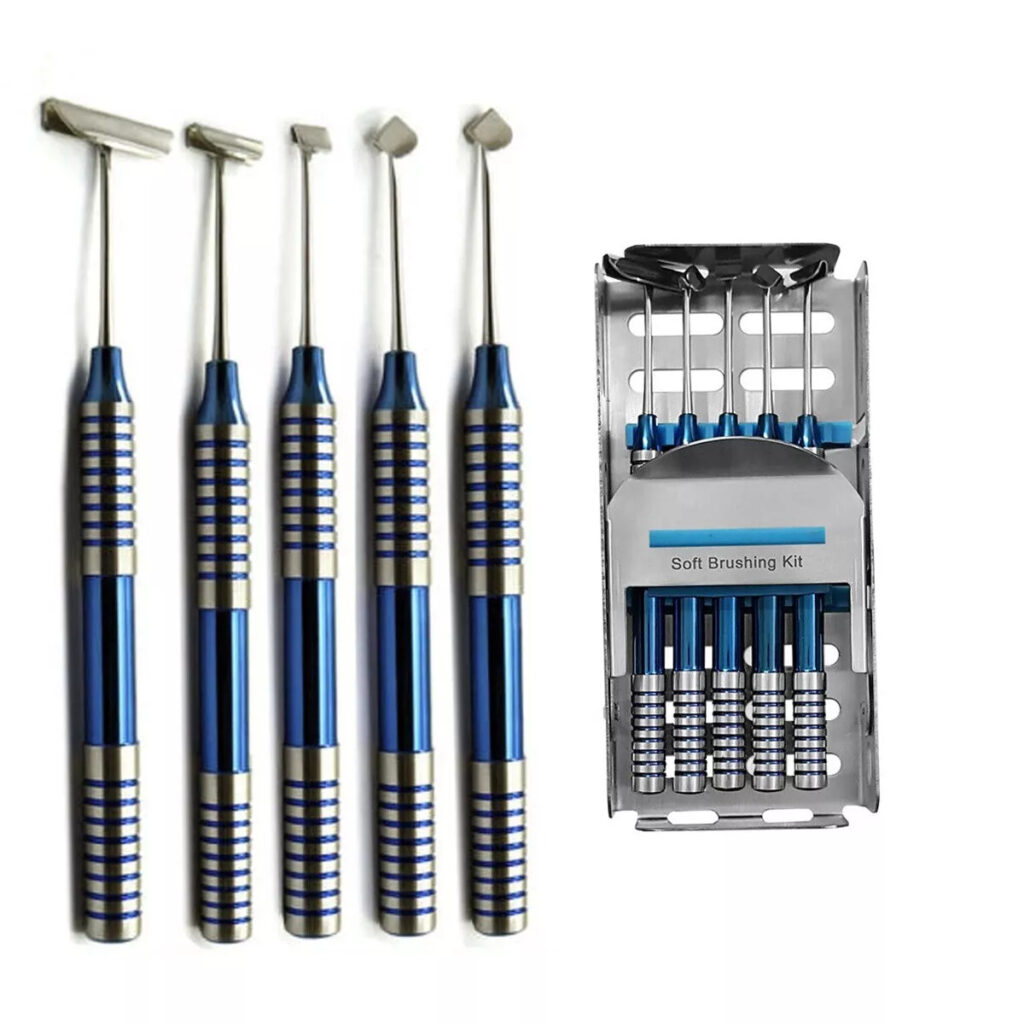When it comes to oral health and restorative dentistry, the use of the right tools plays a critical role in ensuring successful outcomes. Among these tools, sinus lift instruments stand out as essential for specific dental surgeries, particularly when patients require implants in the upper jaw. A sinus lift, also known as a sinus augmentation, is a highly delicate procedure that demands precision, skill, and most importantly—quality instruments. In this article, we’ll explore why these instruments matter, how they connect with other dental instruments, and what to consider when choosing them.
Understanding the Sinus Lift Procedure
A sinus lift is a surgical procedure performed to increase the bone height in the upper jaw, usually in the premolar and molar areas. This is done by lifting the sinus membrane and placing bone graft material to create sufficient support for dental implants. Without adequate bone structure, dental implants cheap or expensive cannot be placed effectively.
Since this procedure occurs very close to the maxillary sinus, precision and care are vital. Even the smallest error can damage the sinus membrane, leading to complications. That’s why the use of specialized sinus lift instruments is indispensable.
Why Quality Matters in Sinus Lift Instruments
The outcome of any dental surgery is strongly tied to the quality of the tools used. Here’s why high-quality instruments make a difference:
1. Precision and Safety
During sinus elevation, the surgeon needs to carefully detach and lift the sinus membrane without perforating it. High-quality dental instruments with sharp, well-designed edges allow for smoother handling and reduce the risk of tearing the membrane.
2. Durability and Reliability
Repeated sterilization and frequent use can wear down low-quality instruments. Reliable surgery kits with durable materials ensure the instruments last longer, maintain their sharpness, and perform consistently.
3. Patient Comfort
Better instruments mean more precise procedures, which often result in shorter surgeries and less trauma for the patient. This reduces post-operative discomfort and enhances recovery.
4. Professional Confidence
When practitioners use advanced and dependable tools, they perform surgeries with greater confidence. This not only increases success rates but also strengthens trust between dentist and patient.
Common Sinus Lift Instruments
A variety of tools are used during sinus augmentation. Each serves a unique purpose, and together, they create a comprehensive surgery kit. Some of the most common instruments include:
Sinus curettes: Designed to carefully separate and lift the sinus membrane.
Bone graft carriers: Used to transport graft material into the prepared sinus cavity.
Elevators: A type of dental elevators specifically designed for sinus lift procedures.
Osteotomes: Used for creating precise channels in the bone.
Membrane separators: Specialized tools for ensuring safe manipulation of the delicate sinus lining.
Connection Between Sinus Lift Instruments and Other Dental Tools
While sinus lift procedures are unique, they share a connection with other common dental surgical instruments. For example:
Dental Elevators: Widely used for tooth extraction, but specific variations are part of sinus lift sets as well.
Composite Filling Instruments: Though used in restorative treatments, their ergonomic design and precision reflect the importance of instrument quality across all dental practices.
Luxating Tooth Instruments: While mainly associated with extractions, they highlight the need for delicate, controlled force, similar to sinus lift procedures.
Eye Surgery Instruments: Interestingly, the concept of precision in microsurgery mirrors the requirements in sinus lift surgeries. Both fields demand accuracy, delicate handling, and high-quality tools to prevent tissue damage.
This interconnectedness emphasizes that whether it’s oral surgery or eye surgery instruments, the role of superior tools cannot be overlooked.
How Sinus Lift Instruments Impact Dental Implant Success
Dental implants have become one of the most popular solutions for missing teeth. However, implants require sufficient bone support to remain stable and functional. In cases where bone volume in the upper jaw is insufficient, a sinus lift becomes necessary.
Without the right instruments, the sinus membrane may tear, causing the bone graft to fail. This can lead to implant instability and the need for corrective surgeries. On the other hand, when specialized sinus lift instruments are used correctly, they pave the way for long-term implant success.
Even for those looking for dental implants cheap, the procedure should never compromise on quality instruments, because cutting costs on tools may lead to surgical complications and increased expenses in the long run.
What to Look for When Choosing Sinus Lift Instruments
Selecting the right dental surgical instruments is crucial. Here are some features to prioritize:
Material Quality: Surgical-grade stainless steel is the standard choice due to its resistance to corrosion and ability to endure repeated sterilization.
Ergonomic Design: Instruments should fit comfortably in the hand, reducing strain during lengthy procedures.
Precision Engineering: Edges, curves, and angles should be finely crafted to ensure delicate manipulation.
Comprehensive Surgery Kits: Investing in a complete surgery kit ensures all necessary instruments are available for various procedures.
Ease of Maintenance: Instruments that are easy to clean and sterilize save time and reduce infection risk.
The Role of Innovation in Dental Instruments
The field of dental surgery is constantly evolving. New designs and modifications in dental instruments aim to reduce surgery time, minimize tissue trauma, and improve patient outcomes. For instance, minimally invasive sinus lift techniques rely heavily on advanced instruments that allow access through smaller incisions, leading to faster healing.
Similarly, just as advancements in eye surgery instruments revolutionized ophthalmology, innovations in dental tools continue to transform oral surgery.
Balancing Cost and Quality
Dentists often face the dilemma of choosing between affordable tools and high-quality instruments. While dental implants cheap are a popular search term, the focus should always be on value rather than just price. A slightly higher investment in premium sinus lift instruments ensures better results, fewer complications, and long-term savings by reducing the need for corrective procedures.
Remember, in surgery, precision and safety can never be compromised.
Final Thoughts
A successful sinus lift is not only about the surgeon’s expertise but also about the reliability of the instruments used. High-quality dental elevators, osteotomes, curettes, and other dental surgical instruments are the backbone of this delicate procedure. Whether comparing them to composite filling instruments, luxating tooth tools, or even eye surgery instruments, one fact remains clear: precision and quality always matter.
Choosing the right surgery kit ensures that procedures are carried out efficiently, safely, and with better outcomes for patients. And while patients may search for dental implants cheap, dental professionals must always prioritize instrument quality to guarantee long-lasting success.



